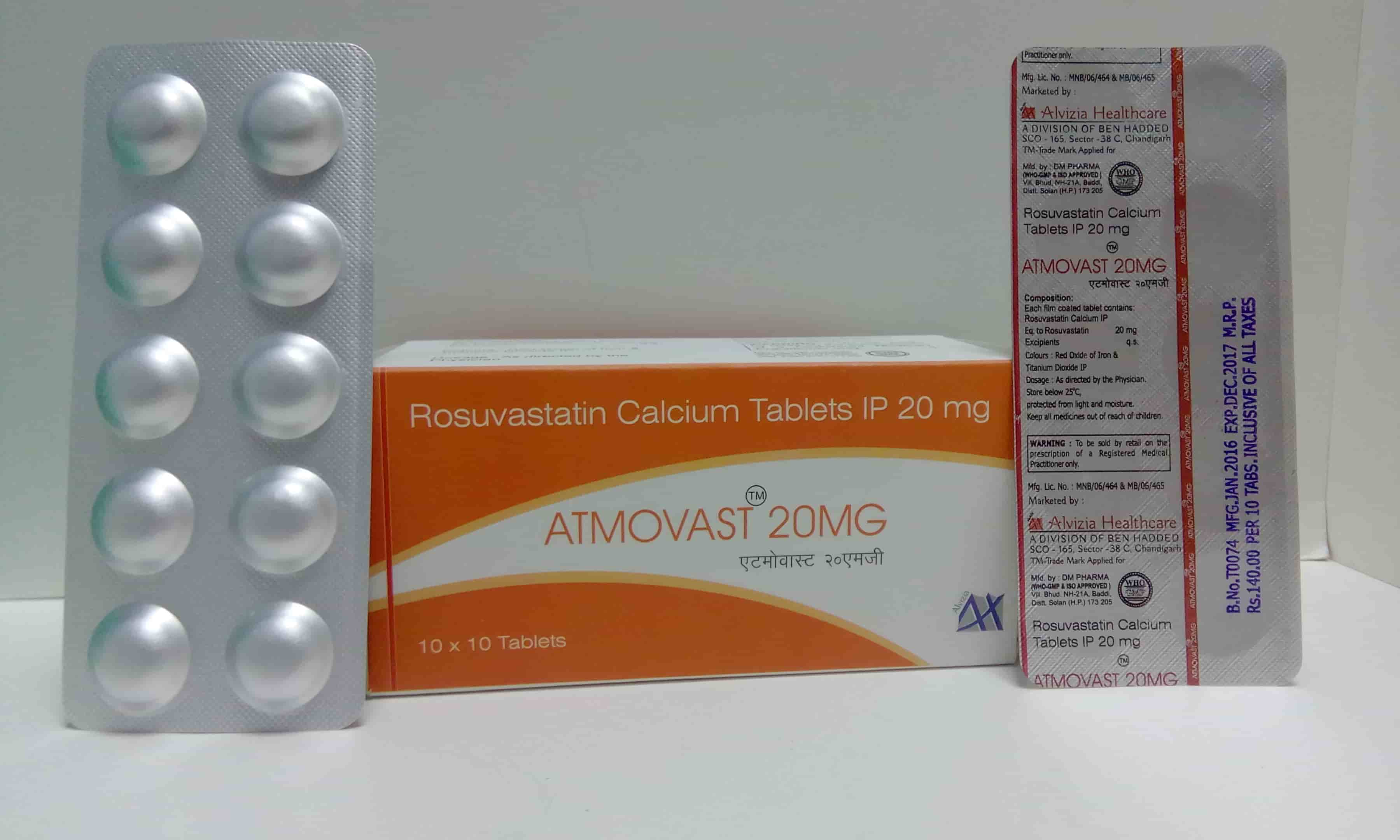
Composition
- Each Tablet Contains:
- Rosuvastatin
20 mg
Packing
- 10x10
ALU-ALU
MRP
- 140
Overview
Rosuvastatin belongs to a group of medicines called statins. You have been advised to take a statin, because changing your diet and taking more exercise were not enough to correct your cholesterol levels. You should continue with your cholesterol-lowering diet and exercise while you are taking Rosuvastatin. Rosuvastatin is used to correct the levels of fatty substances in the blood called lipids, the most common of which is cholesterol. Rosuvastatin can reduce the bad cholesterol and increase the good cholesterol.
Indications & Usage
- As adjunctive therapy to diet for the treatment of adult patients with hypertriglyceridemia
- As an adjunct to diet for the treatment of adult patients with primary dysbetalipoproteinemia
- As adjunctive therapy to other lipid-lowering treatments (e.g., LDL apheresis)
Pharmacology
Pharmacodynamic Properties of Atmovast:
Pharmacotherapeutic group:HMG-CoA reductase inhibitors
Mechanism of Action:
Rosuvastatin is a selective and competitive inhibitor of HMG-CoA reductase, the rate-limiting enzyme that converts 3-hydroxy-3-methylglutaryl coenzyme A to mevalonate, a precursor for cholesterol. The primary site of action of rosuvastatin is the liver, the target organ for cholesterol lowering.Rosuvastatin increases the number of hepatic LDL receptors on the cell-surface, enhancing uptake and catabolism of LDL and it inhibits the hepatic synthesis of VLDL, thereby reducing the total number of VLDL and LDL particles.
Pharmacokinetic Properties of Atmovast:
Absorption: Bioavailability is approximately 20%.
Protein Binding: 88% bound to plasma proteins (mostly albumin). Binding is reversible and independent of
plasma concentrations.
Metabolism: 10% is excreted as metabolite. Cytochrome P450 (CYP) 2C9 is primarily responsible for the
formation of rosuvastatin's major metabolite, N-desmethylrosuvastatin. N-desmethylrosuvastatin has approximately
50% of the pharmacological activity.
Excretion: Approximately 90% of the rosuvastatin dose is excreted unchanged in the faeces (consisting
of absorbed and non-absorbed active substance) and the remaining part is excreted in urine. Approximately 5% is
excreted unchanged in urine. The plasma elimination half-life is approximately 19 hours. The elimination half-life
does not increase at higher doses.
Side Effects:
Very rare but the common side effects are:
- Muscle Pain
- Tenderness
- Weakness
- Confusion
- Memory problems
- Fever
Contraindications
Rosuvastatin is contraindicated in patients with
- Hypersensitivity to rosuvastatin or to any of the excipients
- Severe renal impairment (creatinine clearance <30 ml/min)
- Myopathy
- Receiving concomitant ciclosporin
Pregnancy & Lactation
Rosuvastatin is contraindicated in pregnancy and lactation. Since cholesterol and other products of cholesterol biosynthesis are essential for the development of the foetus, the potential risk from inhibition of HMG-CoA reductase outweighs the advantage of treatment during pregnancy.